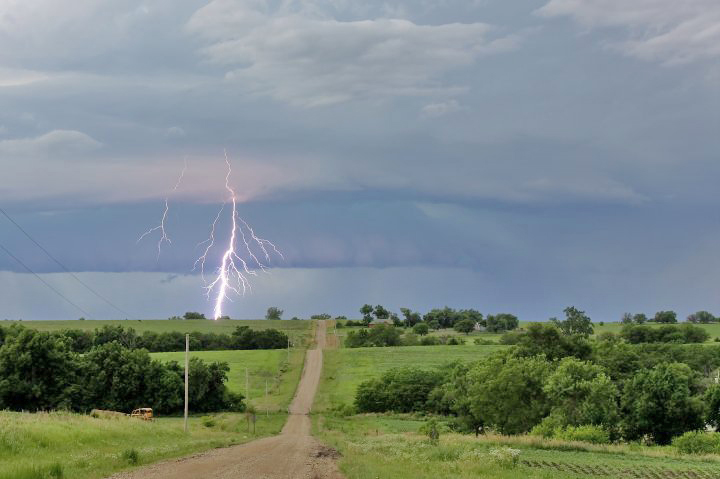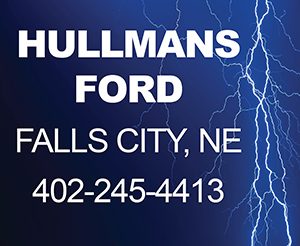
(Natonal Weather Service) Each year the U.S. experiences killer tornadoes that can claim lives. Preparedness makes a difference, where your active participation in Nebraska’s Severe Weather
Awareness Week can help save lives. Weather safety information is a resource to communicate and promote severe weather safety in Nebraska.
The statewide Tornado Drill will be held on Wednesday, March 25th between 10 a.m. CDT/9 a.m. MDT and 11a.m. CDT/10 a.m. MDT. The tornado drill sequence begins with a Test Tornado Watch issued by the Storm Prediction Center at 10 a.m. CDT. The Test Tornado Watch will be followed by Test Tornado Warnings issued by the six Weather Forecast offices that serve Nebraska.
The National Weather Service encourages the public, businesses and schools to practice their readiness during the statewide tornado drill on Wednesday, March 25th.The NWS wants you to not just be ready, but “Weather-Ready” for the upcoming severe weather season.
When it comes to being Weather-Ready, there are a few simple things you should know: Know Your Risk – Tornadoes, large hail, damaging thunderstorm winds, floods and lightning can be deadly for the unprepared. Knowing the weather-related risks posed to you is the first step in becoming Weather-Ready.
Take Action – You should prepare for the hazards of spring by knowing you are not powerless. You should devise a tornado drill plan for you, your family or your business. You should know what to do if lightning becomes a hazard or if flooding becomes threatening. With the hazard potential on the Plains, you should know what to do for each situation and be ready to “take action” if need be. It may save your life and those around you.
Hazardous Weather Outlook – A product which is issued daily, highlighting any potential significant weather in the area for the next 7 days.
Watch – Issued when conditions are favorable for the development of severe weather in and close to the watch area. The size of the watch can vary depending on the weather situation and is usually issued for a duration of 4 to 8 hours. During the watch, people should review severe weather safety rules and be prepared to move to a place of safety if threatening weather approaches.
Warning – Issued when severe weather is detected by radar or reported by storm spotters. Information in this warning will include the location of the storm, what areas will be affected, and the primary threat associated with the storm. People in the affected area should seek safe shelter immediately. Remember that severe thunderstorms can produce tornadoes with little or no advance warning. Warnings can be issued without a watch already in effect.
Significant Weather Advisory or Special Weather Statement – Issued for “near” severe thunderstorms. Typically issued for storms with 3/4” (penny sized) hail and wind gusts near 50 MPH, but can also be issued for large amounts of small hail covering the ground. It is also used as a “heads up” for ongoing severe storms which may move into the area.
Severe Weather Statement – A product issued which provides follow-up information on any severe weather warnings in effect and conditions which have occurred or are occurring. This information includes updated storm paths and any storm reports, such as hail size or damage, received from spotters.
A tornado is a violently rotating column of air in contact with the ground that is capable of destroying anything in its path and hurling objects through the air like deadly missiles. They can produce winds in excess of 200 MPH, be over 1 mile wide and stay on the ground for over 50 miles! Although tornadoes occur in many parts of the world, they are found most frequently in the United States. In an average year, 1,200 tornadoes cause 60-65 fatalities and 1,500 injuries across the nation. Warnings save lives, however deaths and injuries still occur. Some people may not hear the warning, others did but did not believe it would happen to them. Are you and your family prepared for a tornado?
Know the risk for your area. Tornadoes can occur at any time of day, any day of the year. Have a NOAA Weather Radio and battery back-up to receive warnings. Have a plan of action before severe weather threatens. You need to respond quickly when a warning is issued or a tornado is spotted. Know how your community sends warnings. Some have outdoor sirens, others depend on media and smart phones to alert residents. Pick a tornado safe room in your home such as a basement, cellar or an interior room on the lowest floor with no windows. Make sure all members of your family know to go there. If time allows, get your pets. Conduct a tornado drill regularly so everyone knows what to do if a tornado is approaching.
Have a family plan that includes an emergency meeting place. During a Tornado. Take shelter immediately! Remember that occasionally tornadoes can develop so quickly that advance warning is not possible. Stay alert when threatening weather is in your area! Get to an underground shelter, basement or safe room. Mobile homes are not safe! Abandon them immediately and go to the nearest sturdy building or shelter.
If you are outdoors, seek shelter immediately! If you cannot quickly get to shelter: Get into a vehicle, buckle your safety belt and try to drive to the closest shelter. If flying debris occurs while driving, pull over and park. As a last resort: Stay in your vehicle with the seat belt on. Put your head down below the windows, covering with your hands and blanket if possible.
If you can safely get noticeably lower than the level of the road, exit your car and lie in that area, covering your head. Your choice should be driven by your specific circumstances!



Leave a Reply
You must be logged in to post a comment.